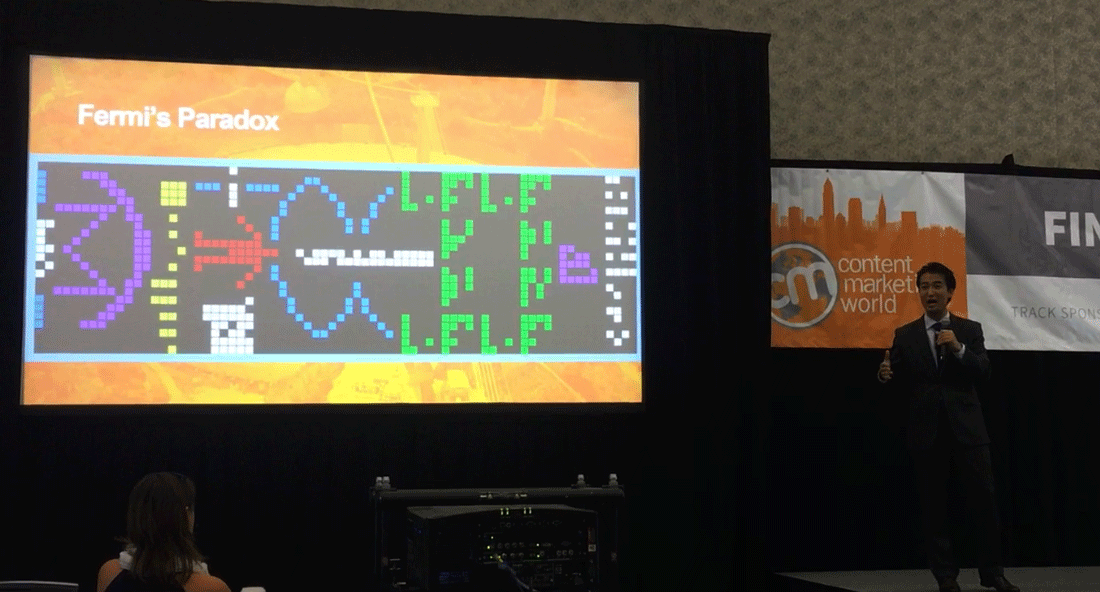CLEVELAND, OHIO — Arrow Electronics raked in over $23 billion in 2015. It distributes the components of our futures — the stuff that goes inside Google servers, General Electric engines, smart-home products and SpaceX rockets.
Two years ago the Centennial, Colorado-based firm got serious about content and expects to nearly double its share price. It brought on former Microsoft publishing exec Victor Gao, who shared the global electronics company’s strategy at a Content Marketing World session.
Arrow’s made a big, interesting bet on content. It publishes an editorially independent publication whose only goal is to “enable vibrant innovation” in the space, Gao said. Competitors even advertise.
Why?
The firm knows that disruption in its business will come from the blindside — not from the 9-to-5 tinkerers but midnight cowboys — so it’s aiming to become the world’s best electronics industry media + tech company. That way it harvests the ideas that may unseat it, and make the public-company’s shareholders and analysts’ dollar-sign eyes shine bright.
I’ll explore more on the firm’s strategy in a later profile, but it’s interesting to note Gao says his bosses are not concerned with the ROI his efforts deliver, because it’s not so much that the endeavor supports a core business but widens and stabilizes it.
There’s a clear analogue to real estate firms, brokerages and agents. As the last post noted, content marketing ROI is tricky. It’s difficult to pinpoint the business goals the practice should support, let alone measure them — partly because doing media correctly fundamentally changes the business, opportunities and outlook.
And as Gary Vaynerchuk made clear at Inman Connect San Francisco this August, real estate brokers and agents should be focused on nothing other than exploiting the huge media opportunity in front of them — they should be the digital mayors of their towns. The death of local journalism makes this an even bigger opportunity.
Borrowing Tacoma, Washington real estate agent Marguerite Giguere’s term, HageyMedia dubs it “community marketing.”
Follow the buyer’s journey
Aligning relevant content to every stage of a buyer’s journey was also a big theme at the conference. The buyer must be the center of the effort. The three audience stage buckets:
Engage –> Nurture –> Convert
I think this viewpoint can be counterproductive, making the relationship with readers too crude and transactional, but you need a framework, right? Not sure I agree in this case — I think Victor Gao’s approach provides more meaningful, transformative results.
This is not to say that firms shouldn’t deeply analyze their audiences and how they relate to their business objectives. As Jennifer Harmel, who heads the demand strategy for the demand-gen consulting firm Annuitas, laid out in her demand generation-focused break out session, firms should get 30 minutes with their 15 best clients and grill them about product + service:
- What problems and challenges were you looking to address with your purchase?
- What firm content did you engage with when deciding to purchase?
- What were you looking for in a service?
ROI!
Several content marketing platforms that help firms determine how content feeds into their bottom line had booths at the event. Israel-based TrenDemon is one.
The firm’s CEO Avishai Sharon broke down his product for me. By embedding a code on a client’s website, it tracks how leads interact with the site’s content and which content converted the best.


